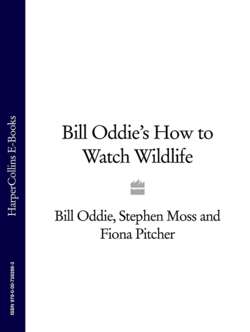Читать книгу Bill Oddie’s How to Watch Wildlife - Stephen Moss - Страница 31
ОглавлениеB
FEBRUARY
Despite recent exceptionally mild winters, February is traditionally the coldest month of the year in Britain, bringing snow and ice to many parts of the country. So it’s a critical month for wildlife, which need to survive the winter so they can breed in the spring.
In recent years we have seen a run of unusually mild winters, with temperatures in February sometimes more like what you would expect in April, especially in southern Britain. As a result, spring appears to be starting a month or so earlier than it used to. The wildlife certainly seems to think so: in a mild February, for example, butterflies begin to emerge, frogs and toads lay their spawn, and some of our wild flowers may appear – only to be killed off by an unexpected frost.
Whatever the weather, February is an excellent month to see large groups of waders and wildfowl, which gather in spectacular flocks on our coastal estuaries and marshes. They come here because even in a hard winter they can find food.
Towards the end of February, even during a normal winter, the first signs of spring usually appear: catkins and buds on the trees, snowdrops and celandines on the woodland floor. These may be modest little flowers, but they nevertheless herald the fact that spring is just around the corner.
Where to go Coastal estuaries and marshes
Considering our northerly latitude – Britain and Ireland are considerably nearer the North Pole than the Equator – we have a surprisingly mild and moderate winter climate. After all, on the same latitude across the Atlantic in Labrador there are regular sightings of polar bears. But thanks to the warming influence of the Gulf Stream, our coasts rarely freeze up, making them the ideal winter home for vast numbers of birds that breed in the high Arctic, such as ducks, geese, swans and waders. So the coast is the place to go if you want to see large numbers of birds.
Bill's top tip
_ Don’t try to identify every bird you see – the spectacle and experience are just as important. And make sure you listen too: there are few more evocative sounds than the clamour of ducks, geese and waders as they fly into roost.
But timing is vital. Although there will always be something to see, by far the best time to visit a coastal marsh or estuary is two hours either side of high tide. As the tide comes in and water levels rise, the birds are gradually driven off their muddy feeding areas towards the shoreline, and join together in flocks to roost. If you are in the right place at the right time, this can be an unforgettable sight, as thousands of birds wheel around in the sky before coming in to land; then huddle up together for warmth and safety. They remain there for a few hours, snatching the occasional moment of sleep, until the tide recedes, the waters fall, and they can begin to feed again.
